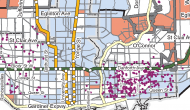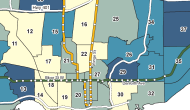Policy Briefs provide succinct and timely commentary on policy issues based on research carried out by members of the Neighbourhood Change Research Partnership based at the University of Toronto. The research and its dissemination are supported by grants from the Social Sciences and Humanities Research Council of Canada. The views expressed are those of the individual authors, and do not necessarily represent the views of the research team, the university, or the funder.
J. David Hulchanski and Philippa Campsie, General Editors
by Alan Walks, PhD, Associate Professor, Cities Centre and Department of Geography, University of Toronto
Neighbourhood Change Research Partnership Policy Brief #2, August 2012
Research conducted has found that maintaining non-market affordable housing is one of the best ways of building and encouraging inclusive communities and preventing the negative aspects of gentrification. Selling TCHC properties into the private market will only exacerbate polarizing trends and work against the goal of building inclusive communities. We thus recommend that these properties not be sold into the private market.
Download Map #1 (PDF) Download Map #2 (PDF)Read the Brief (PDF)
by Robert Murdie, PhD, Professor Emeritus, Cities Centre, University of Toronto, and Department of Geography, York University
Neighbourhood Change Research Partnership Policy Brief #1, August 2012
It is important to consider the spatial distribution of needed repairs. Buildings that are in most need of repair in high-poverty areas are likely to have higher rates of residential turnover and cater to tenants who have very limited housing choices and need to be housed quickly. Consequently, it will likely be difficult to establish any kind of meaningful community life in these buildings and the probability of social disorder may increase.
Download Map (PDF)Read the Brief (PDF)


